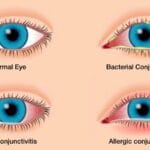Understanding how long bloodborne pathogens can survive outside the human body on various surfaces is crucial for implementing effective disinfection strategies and minimizing the risk of infection. This comprehensive guide delves into the survival times of common bloodborne pathogens, factors influencing their longevity, and best practices for disinfection.
Decoding Bloodborne Pathogen Survival
The persistence of bloodborne pathogens on surfaces isn’t uniform. Various factors influence their survival, making it a complex issue. These factors include the type of pathogen, the surface material, and environmental conditions. Let’s explore the survival times of some common bloodborne pathogens:
Survival Times of Common Bloodborne Pathogens
| Pathogen | Survival Time on Surfaces | Notes |
|---|---|---|
| Hepatitis B (HBV) | Up to 7 days | Can survive in dried blood for this duration, posing a high risk of transmission. |
| Hepatitis C (HCV) | Up to 4 days | Also survives in dried blood, presenting a risk of indirect transmission. |
| HIV | Minutes to an hour | HIV is relatively fragile in the environment and has a significantly shorter survival time compared to HBV and HCV. |
Other Viruses and Their Survival Times
Beyond the primary bloodborne pathogens, understanding the persistence of other viruses on surfaces is equally important.
- Respiratory Viruses (e.g., Corona, Coxsackie, Influenza, SARS, Rhinovirus): These viruses can survive on surfaces for a few days, potentially contributing to the spread of respiratory infections.
- Gastrointestinal Viruses (e.g., Astrovirus, HAV, Poliovirus, Rotavirus): Some gastrointestinal viruses can persist on surfaces for up to approximately two months, making meticulous hygiene practices essential.
Factors Influencing Pathogen Survival
Several factors can impact how long a bloodborne pathogen remains viable on a surface.
Surface Type
Porous surfaces like fabric tend to absorb liquids, leading to faster drying and potentially shorter pathogen survival times. Non-porous surfaces like stainless steel or plastic allow pathogens to remain in a liquid environment, which may prolong their survival.
Environmental Conditions
Temperature, humidity, and sunlight exposure can all affect a pathogen’s lifespan. Higher temperatures and humidity can sometimes promote pathogen growth, while direct sunlight, with its ultraviolet (UV) rays, can deactivate some pathogens.
Presence of Organic Matter
The presence of organic matter, such as blood, other bodily fluids, or even dirt, can shield pathogens and potentially increase their survival time. This highlights the importance of thorough cleaning and disinfection, not just simply wiping a surface clean.
Effective Disinfection Strategies
Knowing how long bloodborne pathogens can survive emphasizes the critical role of proper disinfection.
EPA-Registered Disinfectants
Using an EPA-registered disinfectant is crucial for effective decontamination. These disinfectants are specifically tested and approved for their ability to kill bloodborne pathogens. Always follow the manufacturer’s instructions carefully, paying close attention to dilution ratios and contact times.
Proper Cleaning Techniques
Before disinfecting, thorough cleaning with soap and water is necessary to remove organic matter that can harbor and protect pathogens. This ensures the disinfectant can directly contact and effectively neutralize the remaining pathogens. Looking to learn more about storing trash and recyclables? Explore our guide on how should trash and recyclables be stored.
Ongoing Research and Future Directions
Research into bloodborne pathogen survival is an ongoing process. Scientists continue to investigate the precise survival times of various pathogens under different environmental conditions and on diverse surfaces. This ongoing research will further refine our understanding and lead to more effective disinfection protocols.
Conclusion: Prioritizing Safety
While the exact survival times of bloodborne pathogens can vary, prioritizing safety through consistent and proper disinfection practices is paramount. Treating all blood and bodily fluids as potentially infectious, regardless of their appearance, is the most effective way to minimize the risk of transmission and protect yourself and others. By understanding the factors influencing pathogen survival and employing appropriate disinfection techniques, we can create safer environments and mitigate the spread of bloodborne diseases.
- Discover Long Black Pepper: Flavor & Health Benefits - April 25, 2025
- Shocking Twists: The Grownup Review: Unreliable Narration - April 25, 2025
- A Quiet Place Book vs Movie: A Deep Dive - April 25, 2025
















